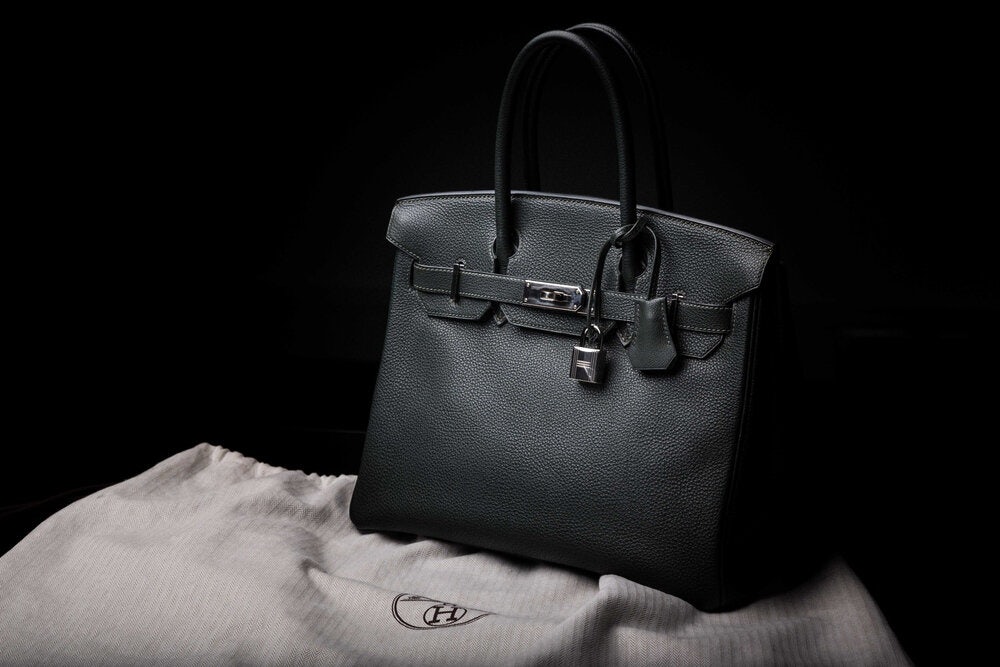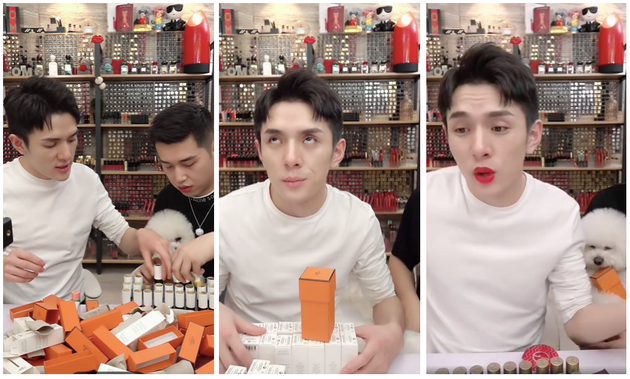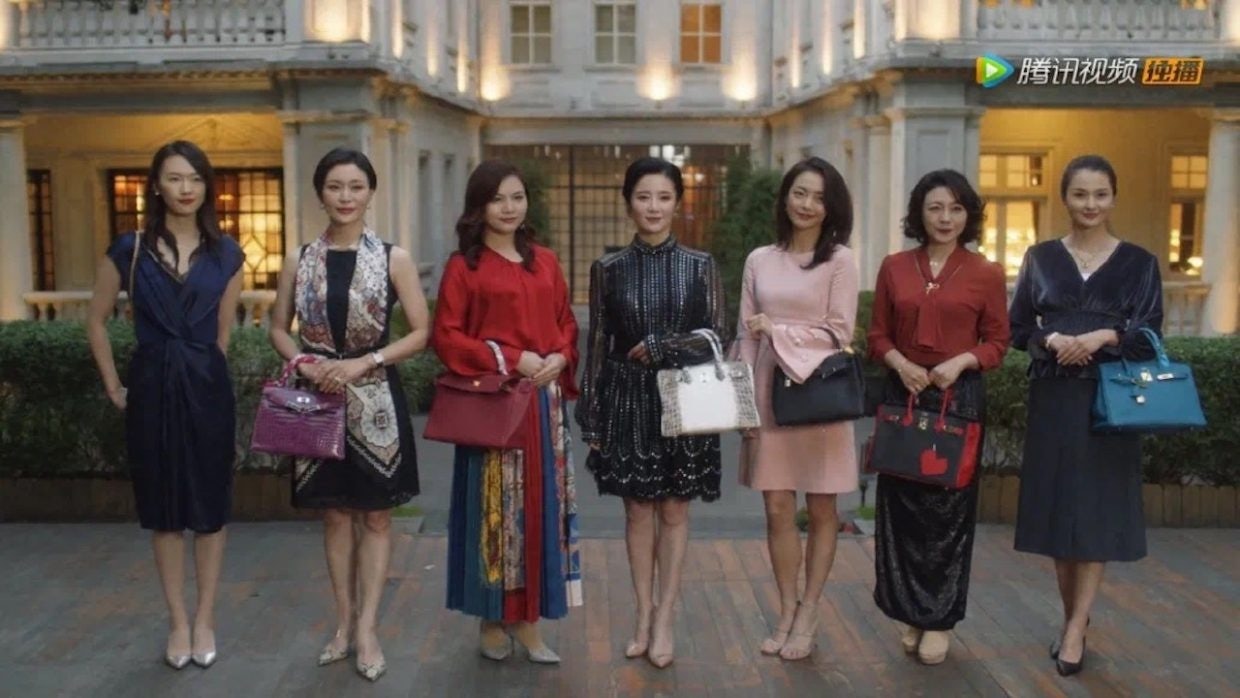For luxury brands that rely increasingly on the China market — particularly amid an ongoing pandemic that has seen luxury purchases collapse in Europe — 2020 has seen a shift in the way audiences discover, interact with, and ultimately choose what they consider to be the “best” brands and collections. With offline events sharply curtailed this year, and Chinese consumers largely glued to livestreams and television programs and films at home, brands have been thrust into the country’s digital sphere whether they wanted to take their business online or not.
While some luxury brands such as Burberry have willingly embraced digitalization in China, and others — among them Valentino and Stella McCartney — finally jumped on the e-commerce bandwagon over the past year via Tmall’s Luxury Pavilion, going online has not necessarily been a positive experience for all. Partly, this is due to the speed with which trends emerge and dissipate, the ephemeral nature of online influence, and the fact that a brand’s fortunes are now tied so closely to events out of its control.
One recent example of this is a recent snub of Chanel on the popular new Chinese television drama “Nothing But Thirty” (三十而已) — part of the growing trend of programming centered on women over the age of 30 (recently detailed by Content Commerce Insider).
In a scene that quickly went viral, one of the lead characters carries a 2017 limited-edition Chanel 2.55 purse (worth somewhere in the range of $6,000-$9,000) to a gathering of affluent housewives, all with Hermès Birkin and Kelly bags in tow. The apparent fashion faux pas instantly turns the character and her bag into outcasts, and the insult is compounded when the Chanel owner finds herself cropped out of a group photo posted to social media in which the other women are proudly displaying their Hermès handbags. She then embarks on a desperate search for her own Hermès purse, calling in favors to obtain the item at great expense, which ultimately causes tension in her marriage. (Adding complexity to the relationship between consumers and luxury that highlights the Hermès product’s role as a social signifier, its scarcity, and prohibitive price point.)
Neither Chanel nor Hermès is explicitly named on the show, which relies on the target audience’s familiarity with global luxury brands to instantly make the connection between the products seen on screen and the brands (and values) that they represent. Viewers quickly turned to social media to learn more about the bags and try to understand what, if anything, was so wrong about carrying a Chanel handbag, and the resulting “uncooling” of Chanel and further lionization of Birkins and Kellys in China is a phenomenon fully led by social media and influencers.

Chanel’s snub on “Nothing But Thirty” and the subsequent social media storm should matter to any luxury brand, simply because it shows how quickly a label can gain or fall out of favor in Chinese pop culture even without any money changing hands or other action by the brand. In many ways, it’s the same problem faced by brands when they air insensitive ads or get on the wrong side of Chinese authorities, or generally get caught up in geopolitics — as a rotating cast of South Korean, Japanese, American, European, and most recently British brands have over the years -- and face calls for boycotts. Whether damage is self-inflicted or not, luxury houses need to be ready for anything, and prepared to take quick action to preserve as much brand equity in China as possible. This, of course, takes a great deal of cultural sensitivity and market knowledge, but also includes an understanding that things can change overnight.
The famously marketing-averse Hermès would not have paid for its inclusion in the “Nothing But Thirty” storyline, leaving both Hermès and Chanel likely seeing the scene for the first time alongside (or after) the audience. And with major events and offline marketing plans disrupted by the coronavirus outbreak, Chanel is left without any good options for a strong response. The best the brand can hope for is that audiences will quickly move on and no lasting damage will be done to its image among a key luxury demographic in China: women roughly between the ages of 30 and 60. Ultimately, we’ll likely need to wait and see if long lines once again form at Chanel boutiques or not ahead of the brand’s next price increase in China.
Hermès itself is not immune to similar cases of bad online press. In April, one of China’s top influencers — livestreaming “lipstick king” Li Jiaqi — weighed in on the Rouge Hermès lipstick collection with a widely noted negative review, saying the five years it took Hermès to develop the line had rendered it out-of-date, and approving of only two of the 29 colors in the collection. Li even rolled his eyes in exasperation at times during his broadcast, and the phrase “Li Jiaqi’s expression” became a hot search term on Weibo after the show.

Admittedly, Hermès cosmetics and handbags inhabit different worlds in terms of affordability and accessibility, but Li’s livestreamed review, which reached millions of potential buyers, goes to show that there are far more avenues for bad press in China now than there were even five years ago.
Pop culture snubs bring up interesting questions with regard to luxury marketing, specifically if a rethink is in order as to if and how luxury houses should approach the digital space in China as well as brand integrations and even e-commerce. While the past few years have seen many — if not most — luxury brands becoming at least somewhat active on Chinese social media platforms such as WeChat and Weibo, relatively few have invested in the e-commerce livestreaming bandwagon or explored short video.
But brands are being dragged into the online space as Chinese shoppers make more purchases closer to home and look to domestic shows and livestreamers — rather than international celebrities, for example — to guide their purchasing decisions.
As Bloomberg pointed out earlier this month in an article on how luxury spending is essentially “trapped” within China’s borders as a result of coronavirus-related travel restrictions, “In the past, luxury houses were worried about diluting brand prestige and losing control of customer data by working with Chinese internet giants like Alibaba, but the urgency of reaching Chinese shoppers has now eclipsed those concerns.” But simply launching a livestream with an influencer isn’t enough. Louis Vuitton recently discovered that a negative pile-on can quickly ensue if the production value of a livestream fails to match up to brand image.
This has been a very difficult summer for luxury in China, as brands contend with potentially damaging and unplanned cameos on TV or livestreamed broadcasts, as well as the perennial risks of counterfeit products, government censure and regulations, and the high costs of maintaining brick-and-mortar stores in China, all while the European boutiques typically filled with Chinese tourists sit mostly empty.
Facing the prospect of ending up as a punchline on a popular television show or being “cancelled” by a red-hot livestreamer, so many questions remain for brand marketers. Do luxury brands now need to be as aggressive online as their mass-market counterparts in China? How can exclusivity be maintained if a brand works with a livestreamer who hawks everything from gemstones to preserved eggs in a particular segment?
Or is the hands-off approach taken by Hermès — staying silent amid either good or bad press — the right one, given an ever-changing news cycle and a firehose of reviews by livestreamers or bloggers or brand cameos a viewer sees in a given week?

